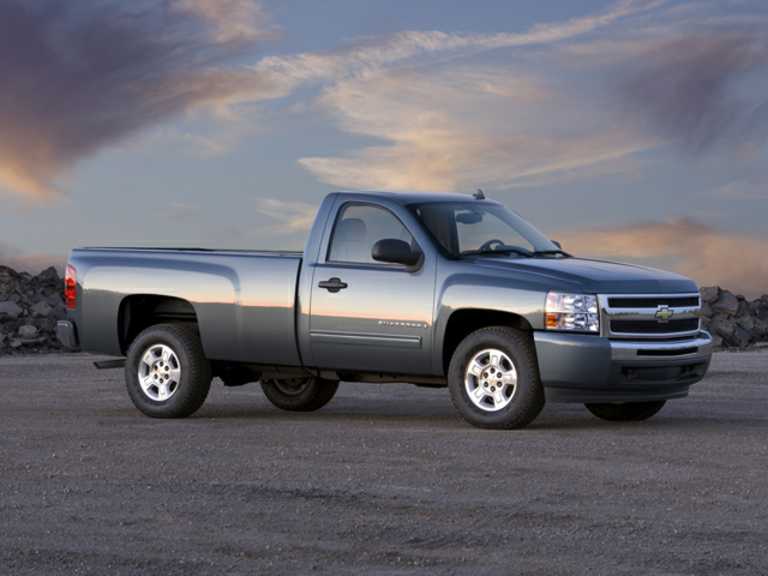
It’s a common question for owners of the 2013 Chevrolet Silverado 1500: What is the oil type and capacity? When you know your vehicle, you’re in better shape to take good care of it, and it will last you for many more years. With numerous engines, the capacity changes.
The 2013 Chevrolet Silverado 1500 can deliver hundreds of thousands of miles, which is a lot of work on your engine oil. Depending on driving conditions, you may find different oil change intervals; vehicles driven in the city, on dusty roads or hauling heavy loads require more frequent oil changes.
Nearing the end of the second-generation Silverado, the 2013 model year has five engines available. In this article, we’ll go over the oil type and capacity for each one, including why the oil type matters to your vehicle’s performance.
2013 Chevrolet Silverado 1500 — What is the Oil Type and Capacity?
The 2013 Chevrolet Silverado 1500 has an Engine Oil Life System that tracks the condition of your engine oil and alerts you when it will need to be changed. If you’re not driving very often or in light conditions, it may not indicate an oil change for a year.
When the “CHANGE ENGINE OIL SOON” message appears, you should change your oil within 1,000 miles. But what if you accidentally bump the reset button for the system? In a worst-case scenario, you should then change your oil every 3,000 miles.
However, even if you expect it will be a long time before your next oil change, make sure to check your oil level at least weekly. The 2013 Chevrolet Silverado 1500 has something of a reputation for burning oil, with some owners reporting up to 3 quarts added between oil changes.
When changing the oil in your 2013 Chevrolet Silverado 1500, make sure to use an oil with the Dexos1 certification mark to maintain your warranty and get the best performance. Though there are five engines, they all use SAE 5W-30, with SAE 0W-30 approved for temps below -20 degrees Fahrenheit.
However, each of the five engines has a different oil capacity, which is handy to know when you get to the store and need to know how much to buy. They are, from smallest to largest:
- Vortec 4.3L V6: 4.31 U.S. quarts without filter change, 4.54 U.S. quarts with filter change
- Vortec 4.8L V8: 5.71 U.S. quarts without filter change, 6.02 U.S. quarts with filter change
- Vortec 5.3L V8: 5.71 U.S. quarts without filter change, 6.02 U.S. quarts with filter change
- Vortec 6.0L V8 Hybrid: 5.71 U.S. quarts without filter change, 6.02 U.S. quarts with filter change
- Vortec 6.2 V8: 5.71 U.S. quarts without filter change, 6.02 U.S. quarts with filter change
Oil Type Explained
So what’s up with the alphanumeric soup that is SAE 5W-30? In this section, we’ll break down what these terms stand for and in which situations you may want to consider calling a local dealership to see what they recommend.
SAE stands for Society of American Engineers, which means that the oil meets the SAE standard for classifying oil viscosity. Viscosity is how thick or thin the oil is. Too thick, and it won’t flow in cold weather. Too thin, and it burns up in the engine and doesn’t provide enough protection.
In most situations, you’ll be able to stick with 5W-30, which is a type of formulation that can shift with the seasons. It provides the equivalent of 30-weight protection in the worst heat of summer while flowing like a 5-weight oil down to about -20 degrees F.
But what happens below that temperature? If you shift to a 0W-30, you still get the 30-weight equivalent protection in the summertime, but the lower end of the scale flows like a 0-weight oil for winter, allowing it to continue flowing at temperatures below -20 degrees F.
What if you’re in a really hot climate? In extreme heat, such as Tucson, Arizona’s regular 120-degree F summers, it may make sense to contact your local dealership to see what they suggest to their customers. However, in most situations, 5W-30 will provide sufficient protection.
Why Synthetic 5W-30?
When you get to the auto parts store or your local supercenter, you may find a boggling display of 5W-30 oils available for purchase. Though brand is often more of a personal choice than a serious difference, synthetic oil versus regular oil can have some differences.
Regular oil is a petroleum product, so it undergoes fractioning and a lot of other technical mumbo-jumbo that most people don’t follow. It’s been used for well over a century to keep engines lubricated and moving, and, for the most part, it does a good job.
Synthetic oil is still a petroleum product, but tends to be a great deal purer and have a better blend than regular oil. It’s more refined, so it can provide better protection and performance than less-refined standard oils.
Because there is no global standard for synthetic oils, the term “fully synthetic” is more of a marketing term to make the product sound superior. Most synthetics are a blend of a highly-purified base oil, proprietary additives and a carrier oil that keeps everything suspended in the oil.
The 2013 Chevrolet Silverado 1500 doesn’t specify that you must use a synthetic oil, as many modern vehicles do, so it’s up to you to decide whether the additional performance and protection are worth the extra cost. Your truck will run fine on either one.
Know Your Vehicle
You don’t need to understand every system in your vehicle. A lot of mechanics don’t really get that far! However, proper maintenance helps you get more miles out of your vehicle, which is where Vehicle History comes in, serving as a database of all you need to know.